
Leiostracosia robusta
Schrammen 1902
Leiostracosia robusta is a moderately rare species in The Lower Campanian of Höver. It appears to be absent in the Upper Campanian.
Leiostracosia robusta forms narrow funnels with a rough exterior. The thickness of the walls is close to 7 mm in adult individuals. Around the growing margin, the wall thickness deminishes in a wedge-like manner, over a height of about 10 mm
The ostia of Leiostracosia robusta are quite large (3 to 4 mm) and have an irregular outline. They are arranged randomly and are separated by bridges of heavily silica mantled lychnisks. The bridges show numerous tiny (not visible with to the naked eye) circular pores.
At the base, the funnel shows a sharp transition into a short stem with branching roots, consisting of a dense fibrous skeletal meshwork.
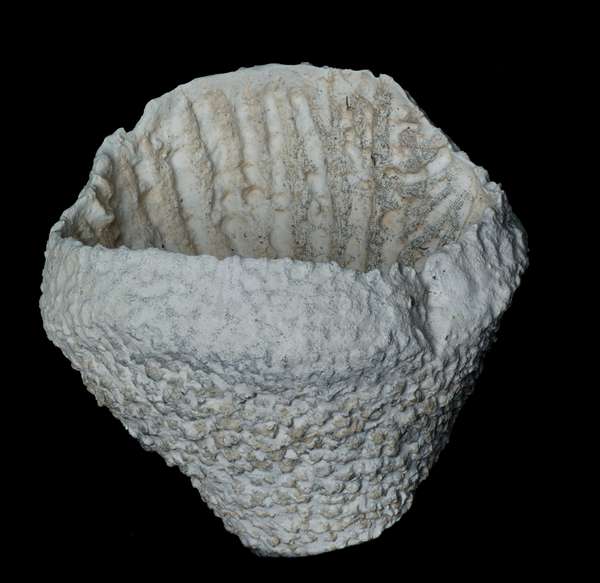
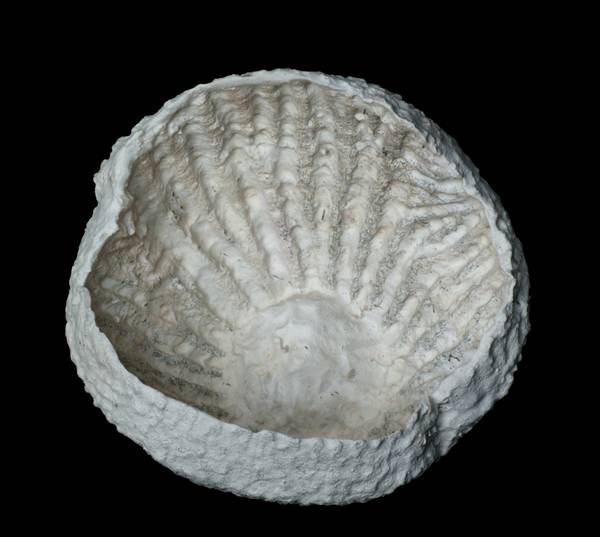
The gastral side of Leiostracosia robusta shows pronounced longitudinal ribs and furrows. The postica exit along the bottom of the furrows, but are filled with sediment and hence invisible in the specimen shown.
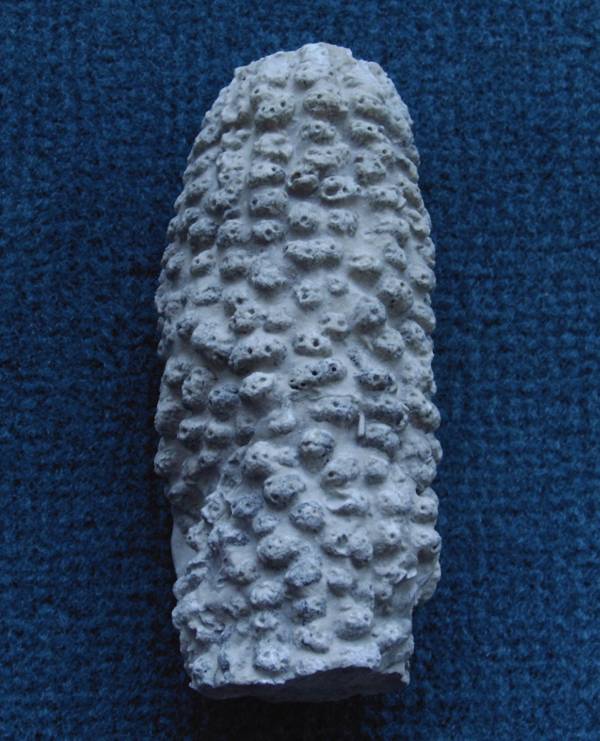



Leiostracosia sp.
New Species
Leiostracosia sp. occurs as a rare species in the Lower Campanian of Höver. Initially, the author had placed the species into the neighbourhood of Microblastidium decurrens. Notwithstanding its similarity to the latter, it can now be proposed as a new species of the genus Leiostracosia, as better study material became available.
Leiostracosia sp. forms thick walled tuberculated tubes which look very much like corn cobs. The tubes have diameters between 20 and 50 mm and the wall thickness is from to 6 to 8 mm. Near the Osculum, the wall thickness decreases and thus the upper end of the tube becomes more or less conical, as shown in the 3rd and 4th picture (side and top view). The nature of the basal section of Leiostracosia sp. is not yet known.
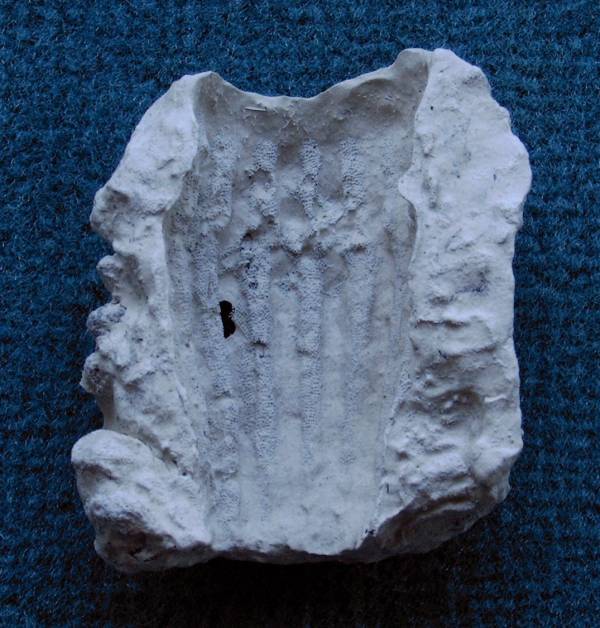
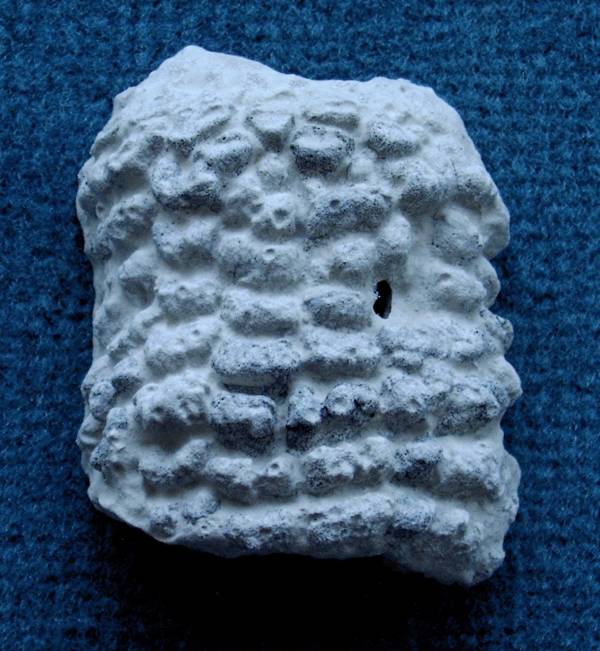
Inside (gastral) and outside (dermal) view of a split sample. The gastral side of Leiostracosia sp. shows pronounced longitudinal ribs and furrows. The latter correspond to the longitudinal rows of tubercles developed on the dermal side. Each tubercle has several ostia.
The dictyonal skeleton consists of regular cubic meshes formed by well developed lychnisks with smooth rays. On the dermal surface, a cortex is developed which consists of silica-mantled lychnisks. On the gastral side, a superficial overgrowth of siliceous filaments is observed.
_001.jpg)
The picture shown here is reproduced from F.A. Roemer (1864), Plate VII. The Roemer's specimen which is designated as Ventriculites tuberculosus could be identical to the Leiostracosia species described here. In this case, it should be named Leiostracosia tuberculosa.